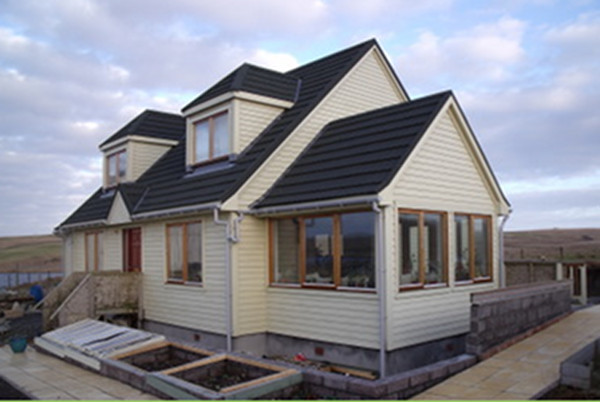Mirror, mirror, on the wall, which is the greenest of them all? When it comes to green buildings, the issue is never cut and dried. We grappled with it in our recent post on Five Of The Greenest Buildings In The World, but our list likely differs from that of some others who generally know what they’re talking about when it comes to sustainable strategies for the built environment. And if that doesn’t complicate matters enough, consider the fact that, according to Preservation Lab Green, the greenest building may always be the one that has already been built.
That said, there are some structures that clearly stand head and shoulders above most green build projects. One such building is the Zero Carbon House, located on the United Kingdom’s most northerly isle of Unst, in the Shetland Islands of Scotland.

Michael and Dorothy Rea have owned land on Unst since 1983. According to the UK’s Guardian, this island occupies roughly the same latitude as southern Greenland, and is regularly socked by 100 mile per hour winds– not exactly the environs most of us would chose for a retirement home. But those winds have come in handy in powering, among other things, the couple’s converted battery-powered Toyota Yaris.
The Reas’ home makes use of two micro wind turbines that supply all of its electricity, bringing the project to net-zero status. But this home goes further — much further. An air-to-water heat pump pulls heat from the air to keep temperatures comfortable year round, with a little help from a water-battery thermal storage system. The Reas grow as much of their own food as possible — using harvested rainwater, of course — via a high-tech greenhouse that employs energy efficient LEDs. These bulbs use just a small amount of energy, but have nurtured the growth of plants like lemon trees and grapevines, despite the home’s far-north location.

If you think all this sounds pretty unique, you’re not alone in that opinion. In fact, when the Reas applied to the Carbon Trust for funding, the project was turned down because it was deemed “too innovative.” Fortunately, there were individuals in the private sector with a little extra cash on hand who were inspired by their vision of a carbon-neutral house. The building project went forward with the help of private sponsorship, and was completed in 2008.
During its construction, the Zero Carbon House attracted attention from all over the world. (In 2007, the Reas woke up to find that their website, www.zerocarbonhouse.com, had become the fourth most popular site worldwide on Google.) Since its completion, the home has become a bit of green tourist attraction, and has been toured by masters degree students from all over the world seeking to make use of the Reas’ knowledge and experiences toward their degree project work.
“We have freely passed on information to assist them,” said Michael Rea on his blog. “We have also learnt that many schools worldwide…are basing their climate change projects on our house and continuing project. To us, this is very encouraging.” He goes on to note that his wife, Dorothy, as a former primary school head teacher, is especially pleased.
More details regarding the Zero Carbon House are available online.